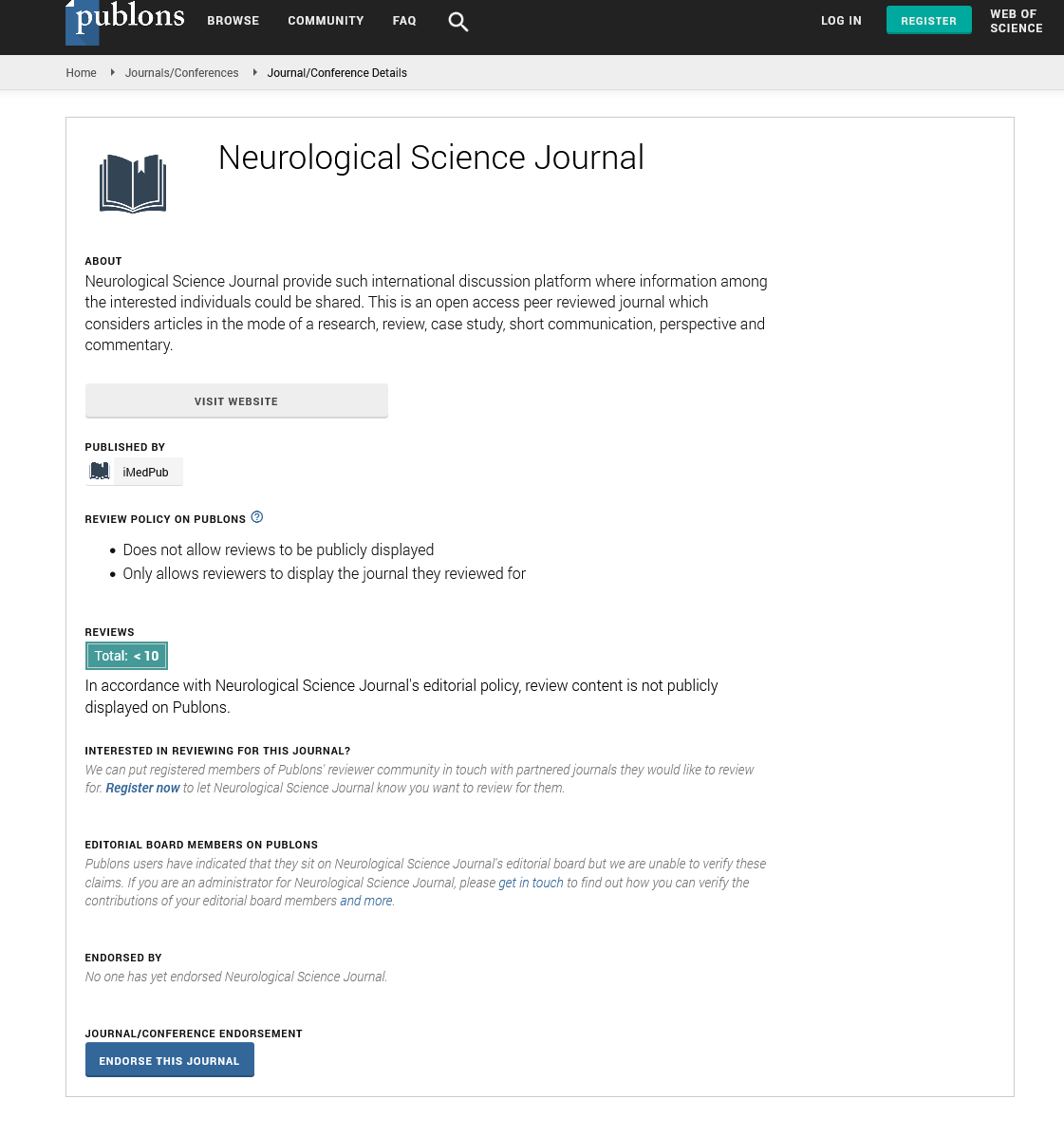Abstract
The effect of insulin on Schwann cell differentiation of rat epidermal neural crest stem cells - Pariya Khodabakhsh - Shahid Beheshti University of Medical Sciences - Iran
Schwann cells (SCs) play a crucial role in successful nerve repair and regeneration in both the peripheral and central nervous systems and promise to be a useful tool for cell-based therapies, disease modelling and drug discovery. Therefore, establishment of a procedure to obtain activated, highly proliferative SCs, in an appropriate time for clinical applications, is a prerequisite. However, the sources of SCs are limited both for studies of SC development and biology and for the development of treatments for SC-associated diseases. It is previously showed that epidermal neural crest stem cells (EPI-NCSCs) are a biologically relevant source for generating large and highly pure populations of SCs. Insulin is a peptide growth factor that regulates the transport, synthesis and storage of substances required for growth and differentiation of various kinds of developing cells. Regarding to the role of insulin in myelinating SC differentiation, in present study, we aim to examine the impact of insulin, on the cell viability and SC differentiation of EPI-NCSCs, isolated from bulge of rat hair follicles, through MTT and real-time quantitative PCR analysis, respectively. Insulin treatment at concentrations of 0.005-5 µg/ml increased the cell viability, dose dependently. Insulin exposure (5 µg/ml) increased gene expression of BDNF, FGF2 and IL-6 in EPI-NCSCs from day 1 to 6, while EGR1 (as a non-myelinating SC marker) was downregulated. Taken together, these results may corroborate the critical importance of insulin in pursuit of SCs through induction of SC differentiation of EPI-NCSCs.
Introduction:
During the development of embryonic neural crest the cells will migrate out of the forming neural tube to different anatomical locations, whereas they give rise to not only to several cell types of the peripheral nervous system but also to the several non-neural cell types such as muscle cells, craniofacial cartilage, and bones. Although the strong evidences exist for a glial identity of stem cells within the central nervous system. The novel population of palatal NC-SCs (pNC-SCs) within the palatal rugae or rugae palatinae of the palatal mucosa, which are transversal ridges developing on the secondary palate. These nestin-positive NC-SC can be efficiently isolated, expanded, expressed Klf4, Sox2, c-myc, Oct4, and differentiated into different types of neural cell.
The Schwann cells are highly plastic cells that are able to differentiate into melanocytes and myofibroblasts undergo cellular reprogramming, dedifferentiate, and re-enter the cell cycle. A hallmark of reprogramming of an adult cell into a stem cell is an alteration of its pattern in the gene expression. The phenotype of the nestin-positive cells within the adult palate in their endogenous niche and their potential link to the Schwann cells were they are investigated by using immunohistochemistry, reverse transcription–polymerase chain reaction (PCR), correlative fluorescence, and transmission electron microscopy. Moreover, the expression pattern of cultivated neurospheres are isolated from the nestin-positive Schwann cells from sciatic nerve (SN) and these was investigated in comparison to pNC-SCs. However, we analyzed the expression of the pluripotency factors of Oct4, Klf4, c-Myc, and Sox2 and NF-κB protein family members within the SN Schwann cells cultured in a conventional approach and as a neurospheres in comparison to directly isolated SN Schwann cells and investigated the multilineage differentiation potential of Schwann cell spheres of palatal and sciatic origin as proof of their multipotency.
Author(s): Pariya Khodabakhsh
Abstract | PDF
Share This Article
Google Scholar citation report
Citations : 11
Neurological Science Journal received 11 citations as per Google Scholar report
Neurological Science Journal peer review process verified at publons
Abstracted/Indexed in
- Google Scholar
- Publons
Open Access Journals
- Aquaculture & Veterinary Science
- Chemistry & Chemical Sciences
- Clinical Sciences
- Engineering
- General Science
- Genetics & Molecular Biology
- Health Care & Nursing
- Immunology & Microbiology
- Materials Science
- Mathematics & Physics
- Medical Sciences
- Neurology & Psychiatry
- Oncology & Cancer Science
- Pharmaceutical Sciences
